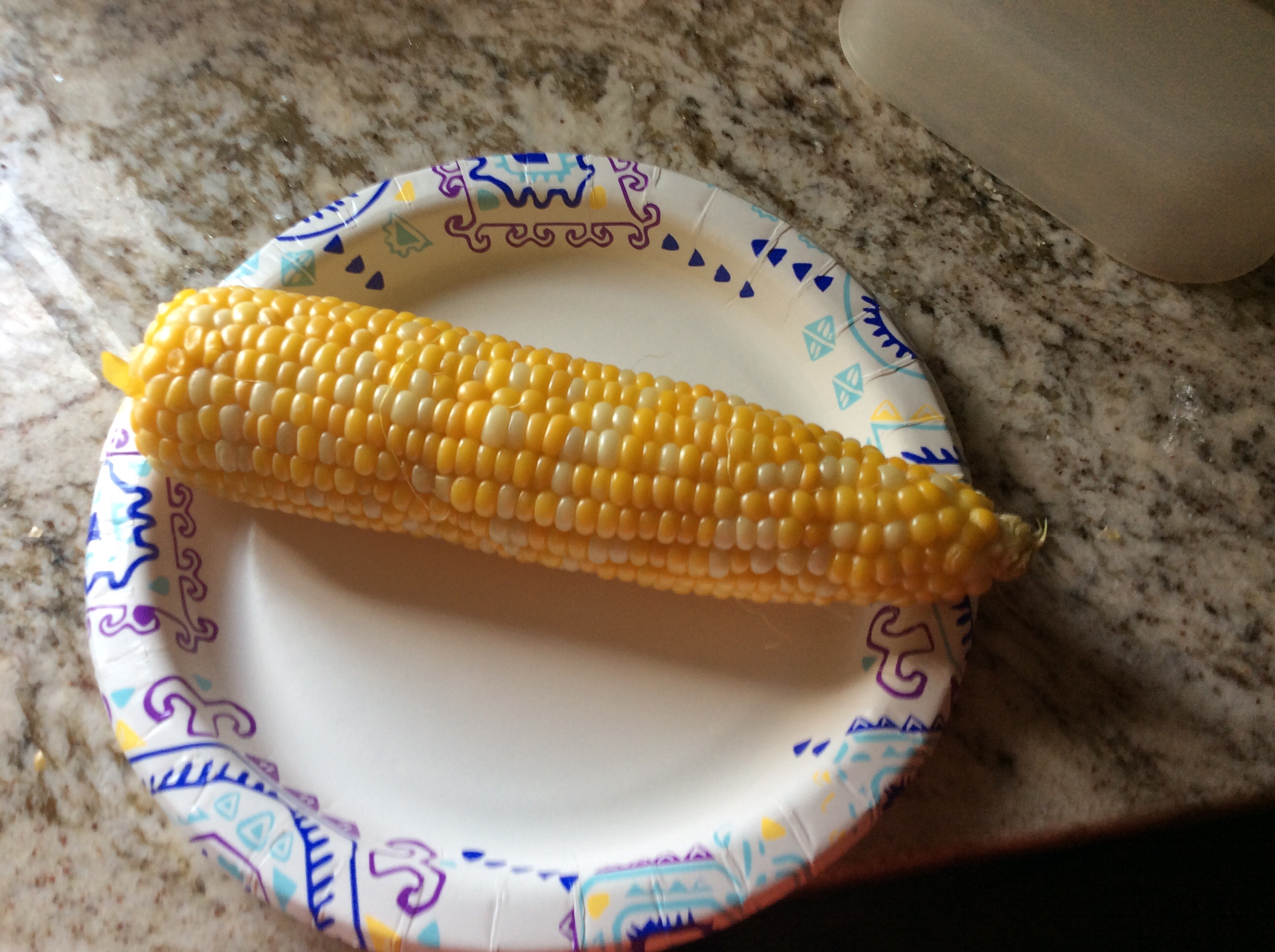

Warning: Microwave ovens heat water rather than the food itself. If the corn feels too soft or looks burned, remember to use a shorter time in the future. If they aren’t cooked, cook for longer in the microwave. Once you think the corn has cooled enough, peel back the husk and touch the corn kernels. When you remove the corn from the microwave, allow it to sit for a minute or two until it’s cool enough to touch. Don’t skip this step, as the corn will continue to gently cook due to its internal heat. This increases the chance that the corn will cook evenly. It’s a good idea to turn the ears approximately halfway through the cooking period. You’ll need to adjust this to suit your microwave’s cooking speed though. As a general rule, one ear should take between 2-4 minutes, while four ears may take up to five minutes. The time varies depending on the quantity of ears you’re cooking and the power of your microwave.
#Microwave corn on the cob full#
Microwave Timing: Cook the corn on full power. Doing so can mean the ears don’t cook evenly. The amount you can cook depends on the size of your microwave, however, as the ears should not be touching each other when cooking. In many cases, you’ll want to microwave more than one ear though.

If you’re microwaving a single ear of corn, place it on a microwavable plate and ensure it’s rotating around the centre of the oven. While it’s not necessary to clean the leaves, as they will be removed before eating, you can do this if you wish. You may also need to trim the corn if you have a small microwave.

Get rid of loose leaves that can easily be removed. The next step is to prepare the corn so it fits in the microwave. Any longer and it probably won’t taste as fresh, as the sugar within the corn becomes too starchy. Ideally, you should eat corn within a few days of buying it. If they are turning yellow and dry, look for another. If they look sticky, then the corn is ripe. The easiest way to tell whether corn is ripe is to look at the tassels. The best ears for corn on the cob are fresh and still have the husk. They should also be ripe. Step 1: Choose Fresh Corn That Still Has The Husk Note: Not every step in this guide is essential, but we recommend following the method exactly for best results. As we wrote in our blog post about microwave nutrients, microwaving is unlikely to destroy nutrition either. The good news is that this method is very simple, yet produces corn that tastes just as good as if it had been boiled. There are several methods for cooking in a microwave that take considerably less time, and we’re going to show you our favourite in this post. The problem with boiling corn is that it takes a long time though. Ĭorn on the cob is a (relatively) healthy dish that goes great with a variety of foods – including a barbecue.
#Microwave corn on the cob how to#
Is there any vegetable more delicious than a freshly cooked corn on the hob that’s lathered in butter? We can’t think of one! In this article, we’ll be showing you how to cook corn on the hob in the microwave without needing to boil water.


 0 kommentar(er)
0 kommentar(er)
